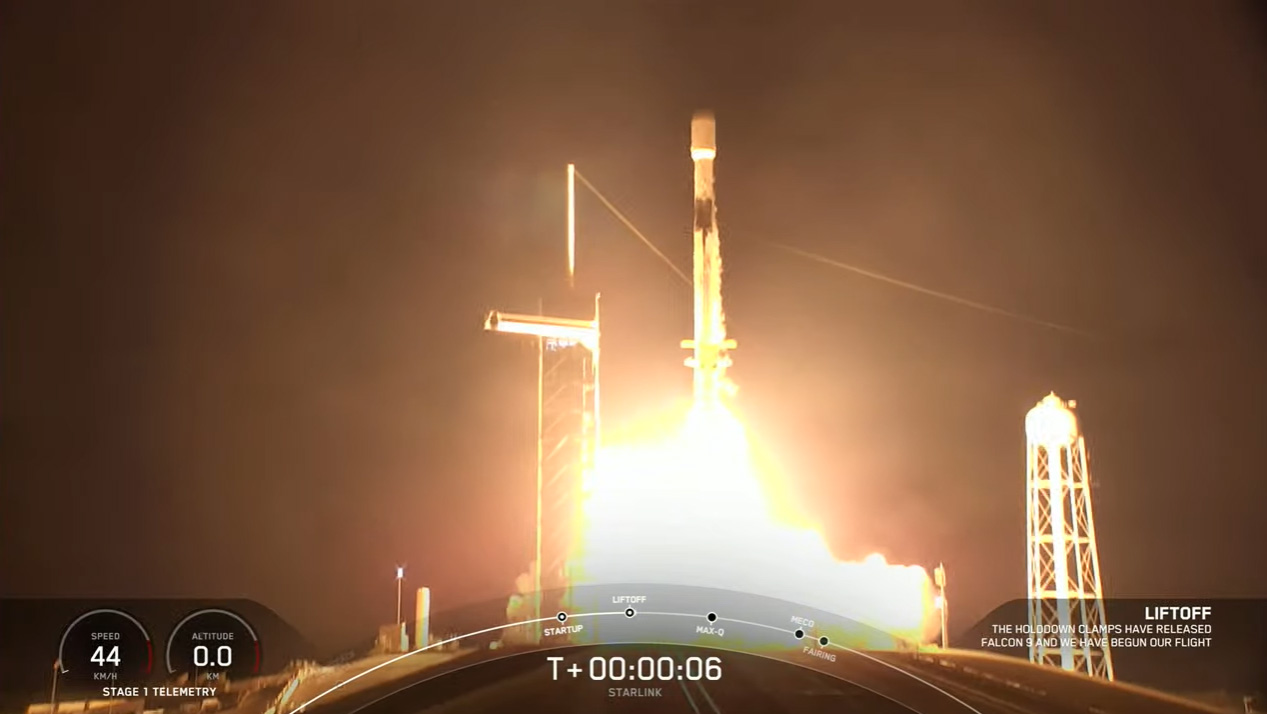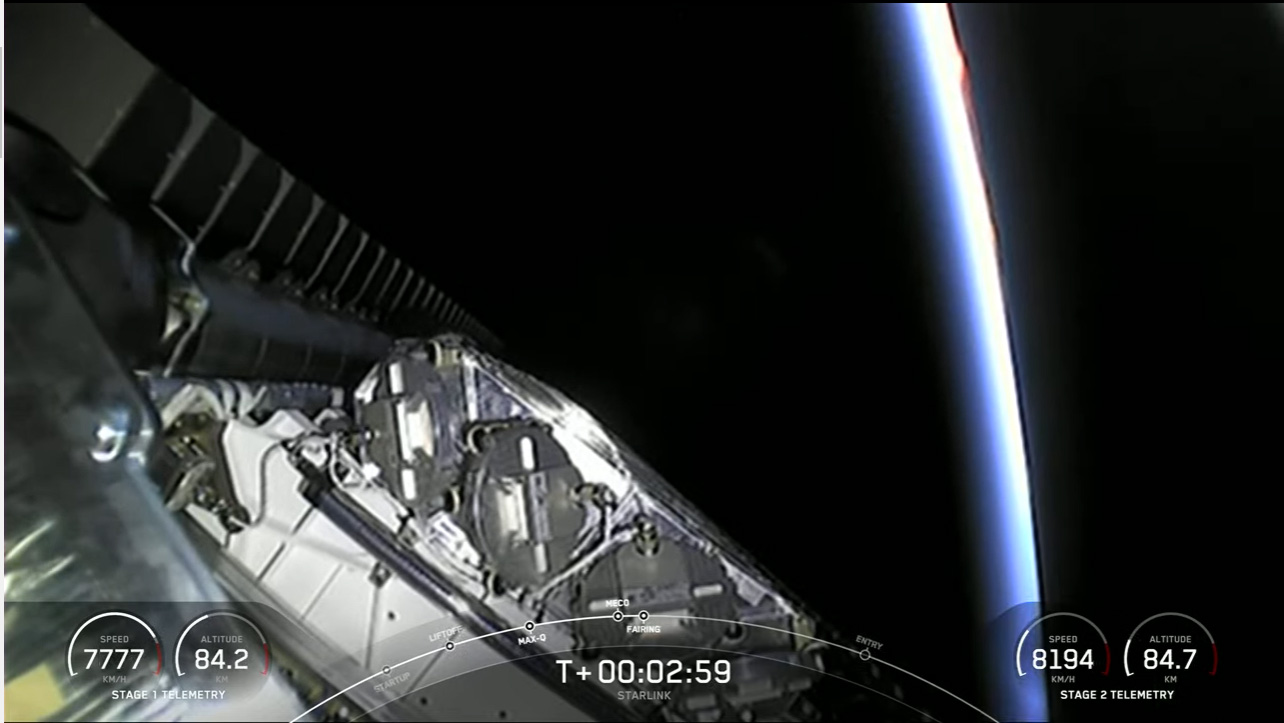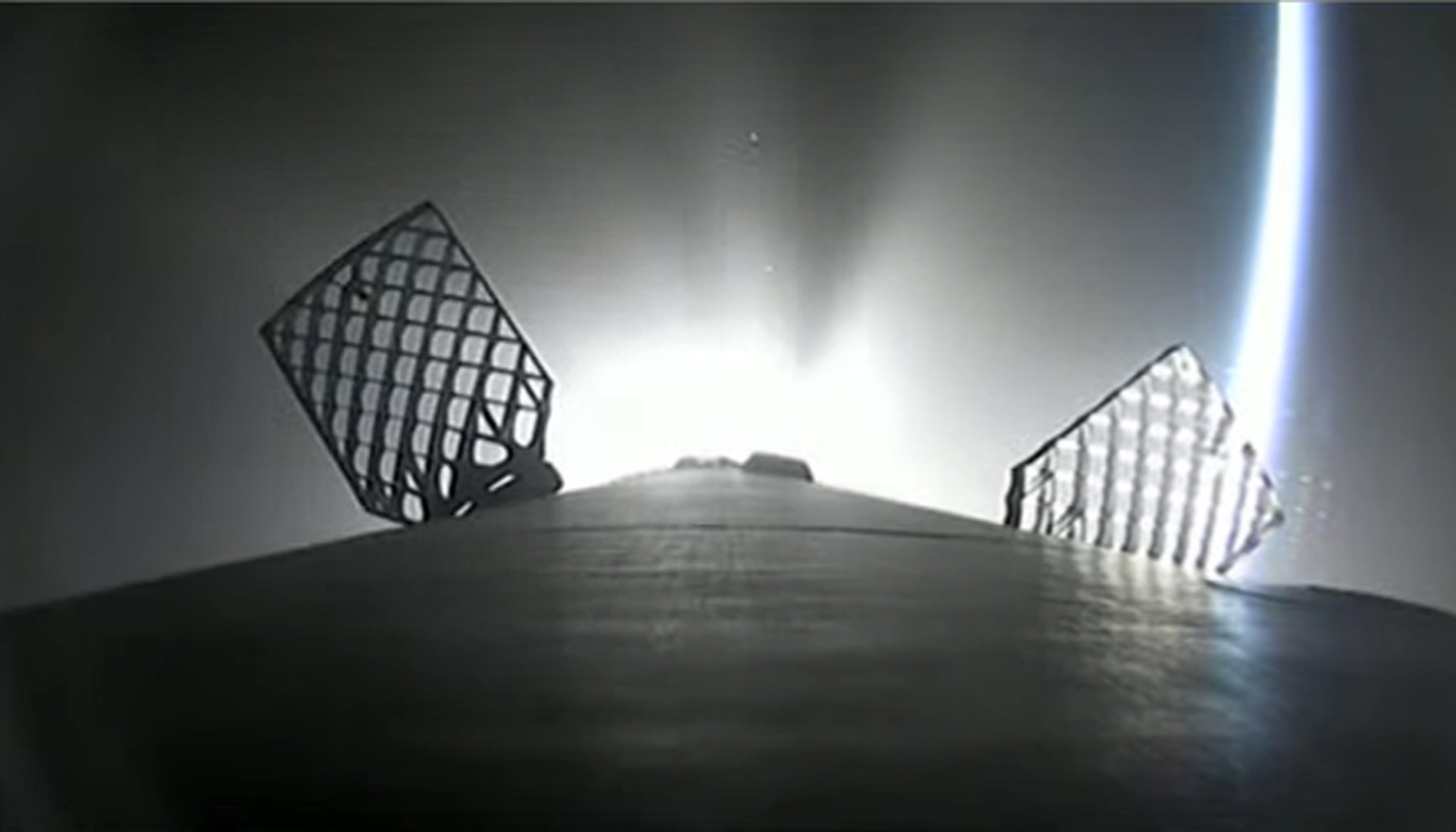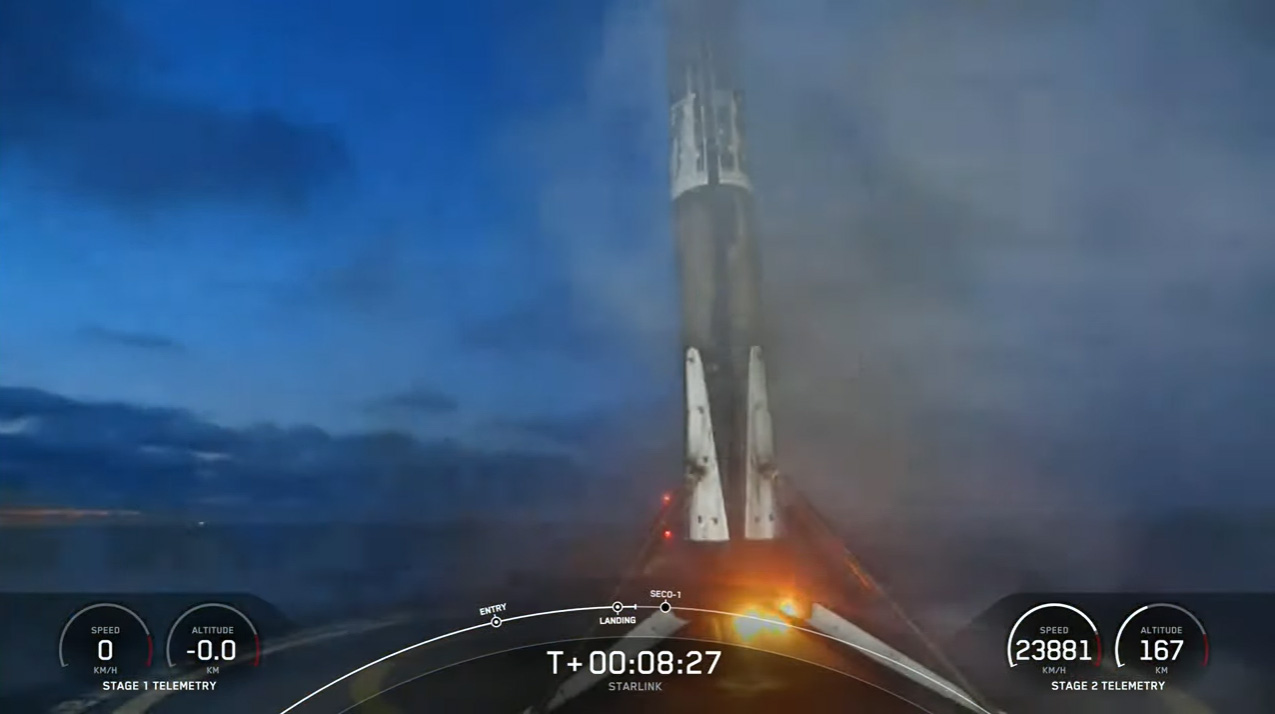A SpaceX launched more than four dozen new Starlink internet satellites into orbit before dawn on Friday in a record-tying 12th flight for its Falcon 9 rocket.
The two-stage Falcon 9 rocket topped with 53 of SpaceX's Starlink internet satellites lit up the predawn sky above Florida as it lifted off from Pad 39A of NASA's Kennedy Space Center in Florida Friday at 5:42 a.m. EDT (0942 GMT).
The mission marked the 12th launch for this Falcon 9's first stage, tying a company reuse record. SpaceX has flown three different Falcon 9 boosters 12 times so far.
And Friday's launch vehicle will likely fly again as SpaceX successfully landed the booster on its droneship A Shortfall of Gravitas, which was stationed off the Florida coast in the Atlantic Ocean. It was the 111th successful landing for SpaceX.
Related: SpaceX's Starlink megaconstellation launches in photos



Starlink is SpaceX's huge and ever-growing constellation of broadband satellites. The company has launched more than 2,400 Starlink spacecraft to date, many of them this year; 10 of SpaceX's 18 launches in 2022 have been dedicated Starlink missions.
Friday's launch marked the 45th Starlink mission since launches began in 2019, SpaceX sales manager Ian McCullough said during live launch commentary.
Get the Space.com Newsletter
Breaking space news, the latest updates on rocket launches, skywatching events and more!
And there will be many more such flights to come. The next-generation version of Starlink — which is already providing internet service to a variety of locales around the globe — could consist of up to 30,000 satellites, according to paperwork filed by SpaceX.

As the Falcon 9 launch tally shows, 2022 has already been a big year for SpaceX. Last month was particularly busy; the company launched six missions in April, including Ax-1 mission, the first-ever all-private crewed flight to the International Space Station, and Crew-4, SpaceX's latest astronaut flight to the orbiting lab for NASA.
"With reuse enabling our increased launch cadence, we've been able to support one launch per week on average,' McCullough said during Friday's launch. "In April alone, we had a total of six launches, including two human spaceflight launches with Ax-1 and Crew-4."
Ax-1 came back to Earth after a 15-day stay aboard the station, but Crew-4, which launched on April 27, will be up there for about six months — roughly the same duration as Crew-3, which launched in November 2021 and splashed down off the Florida coast early Friday.
"And we're seeing no signs of slowing down soon," McCullough said. "In the past 12 months, we've added more than 40 commercial missions to our manifest that will launch in the next couple of years."
Mike Wall is the author of "Out There" (Grand Central Publishing, 2018; illustrated by Karl Tate), a book about the search for alien life. Follow him on Twitter @michaeldwall. Follow us on Twitter @Spacedotcom or on Facebook.
Join our Space Forums to keep talking space on the latest missions, night sky and more! And if you have a news tip, correction or comment, let us know at: community@space.com.

Michael Wall is a Senior Space Writer with Space.com and joined the team in 2010. He primarily covers exoplanets, spaceflight and military space, but has been known to dabble in the space art beat. His book about the search for alien life, "Out There," was published on Nov. 13, 2018. Before becoming a science writer, Michael worked as a herpetologist and wildlife biologist. He has a Ph.D. in evolutionary biology from the University of Sydney, Australia, a bachelor's degree from the University of Arizona, and a graduate certificate in science writing from the University of California, Santa Cruz. To find out what his latest project is, you can follow Michael on Twitter.









